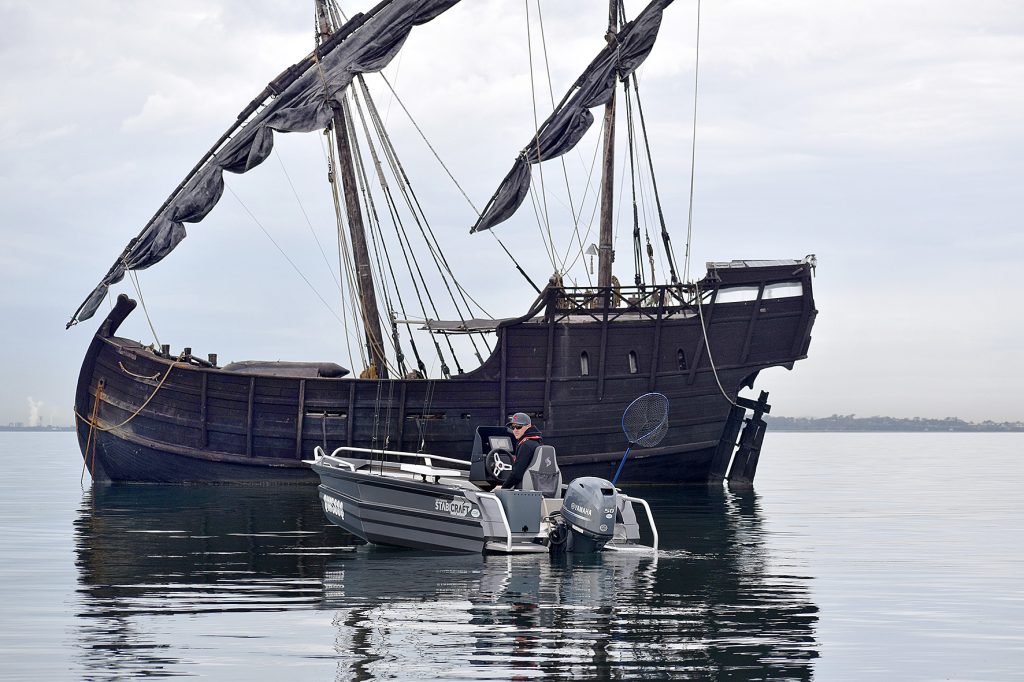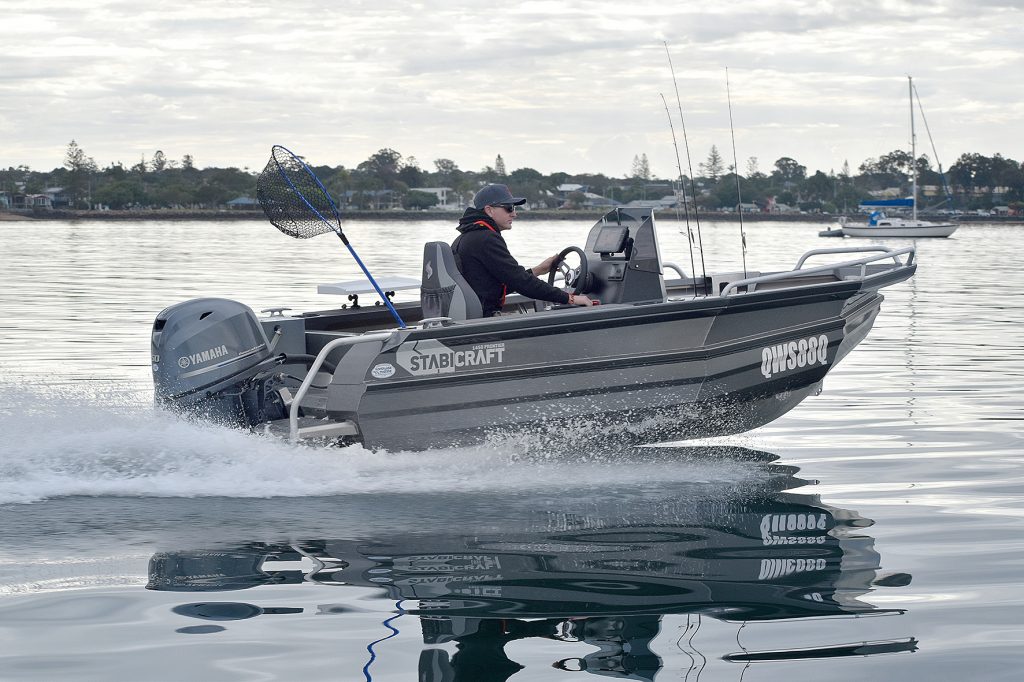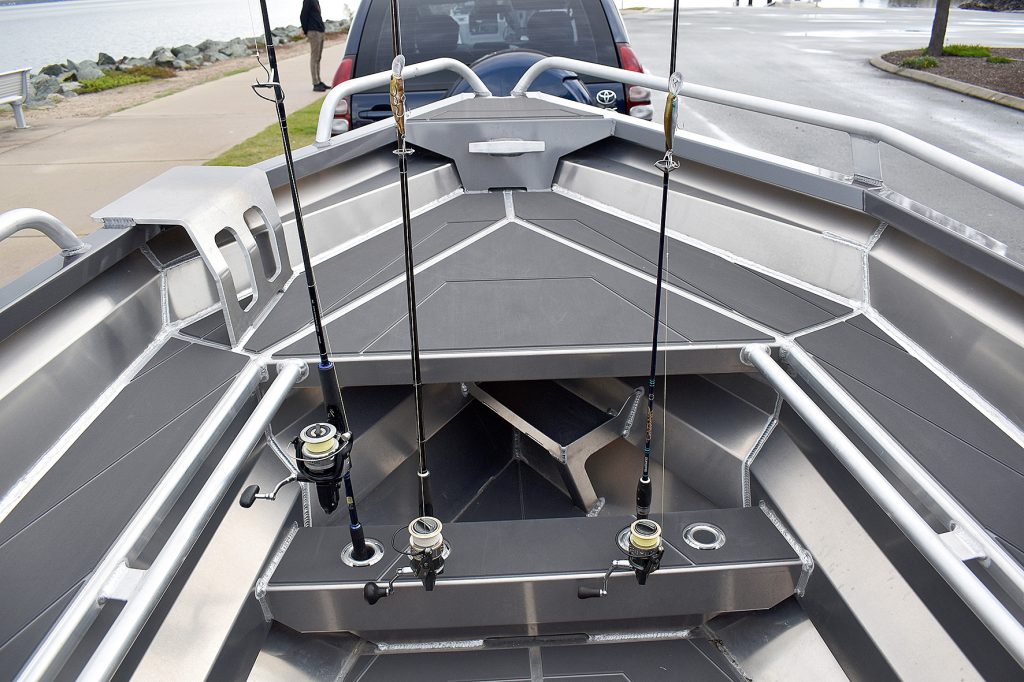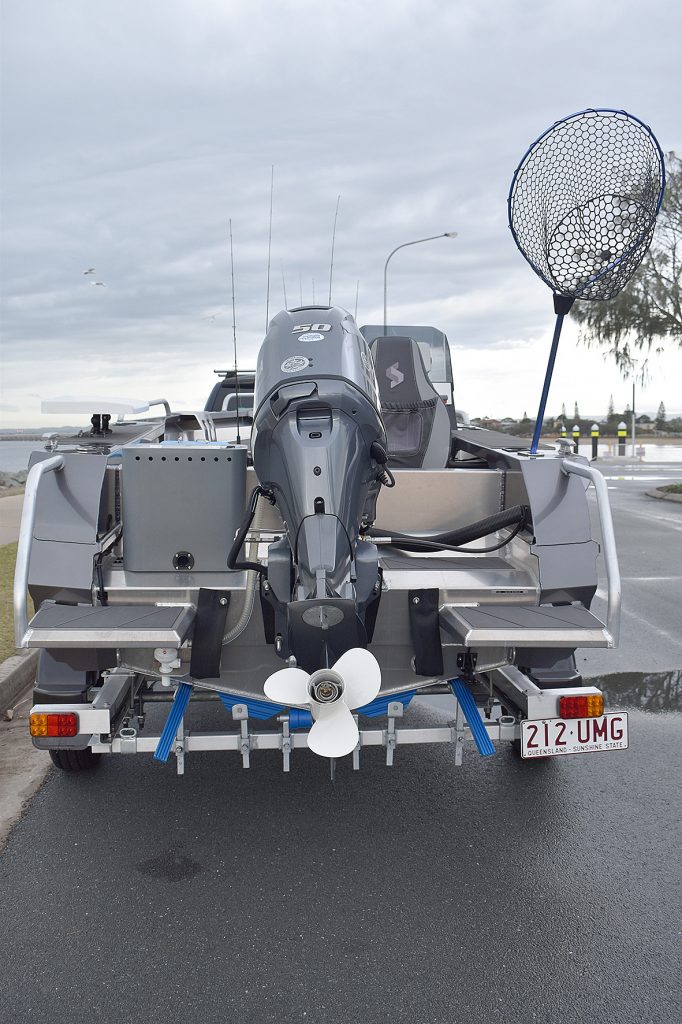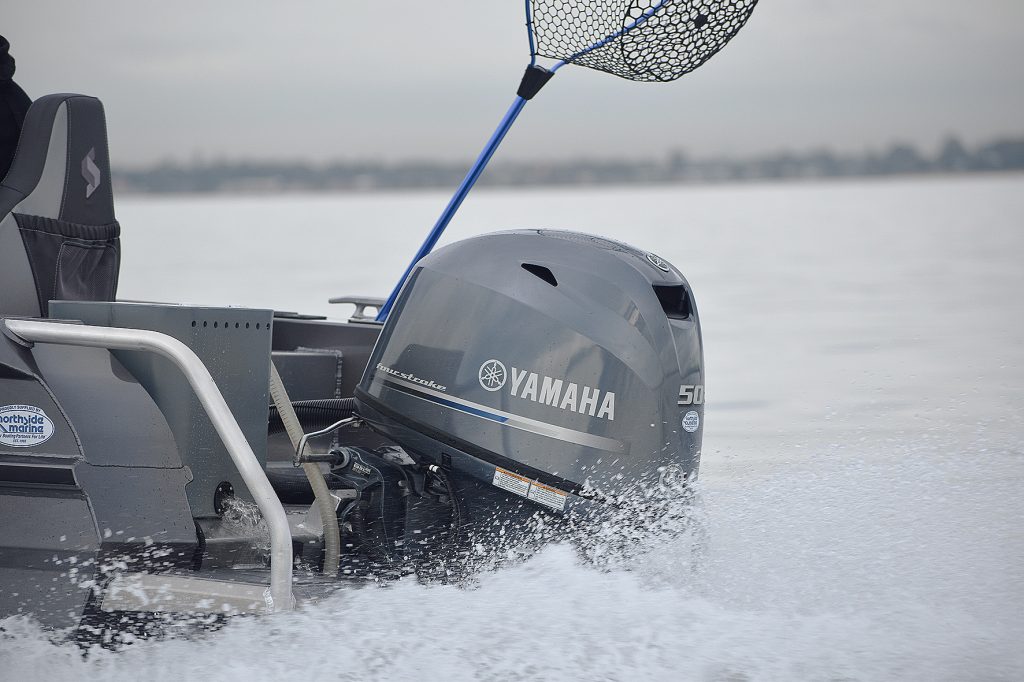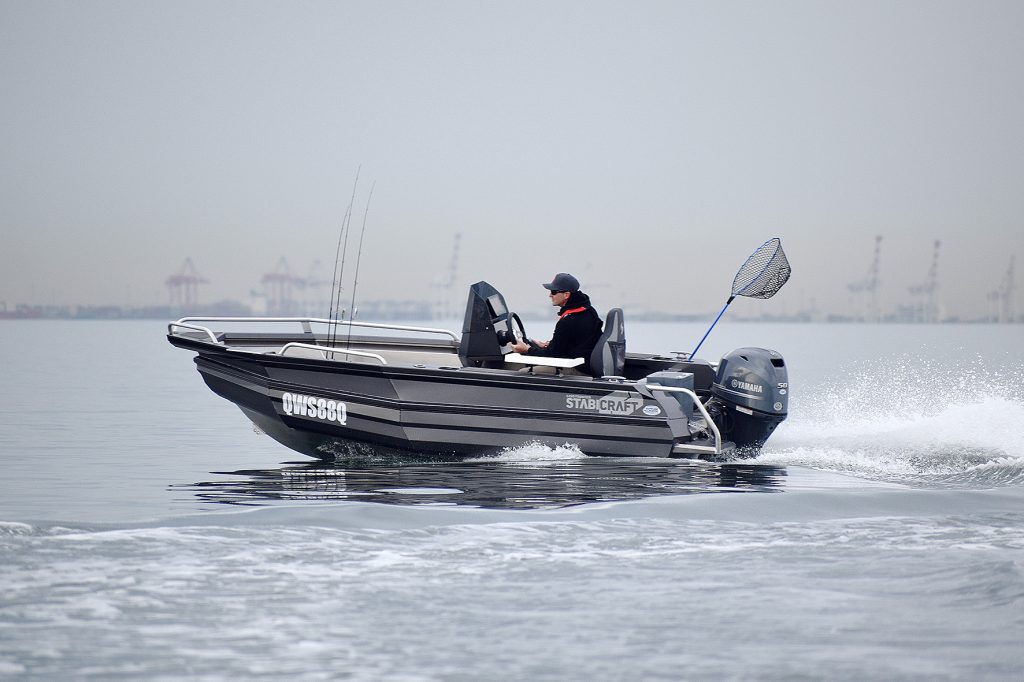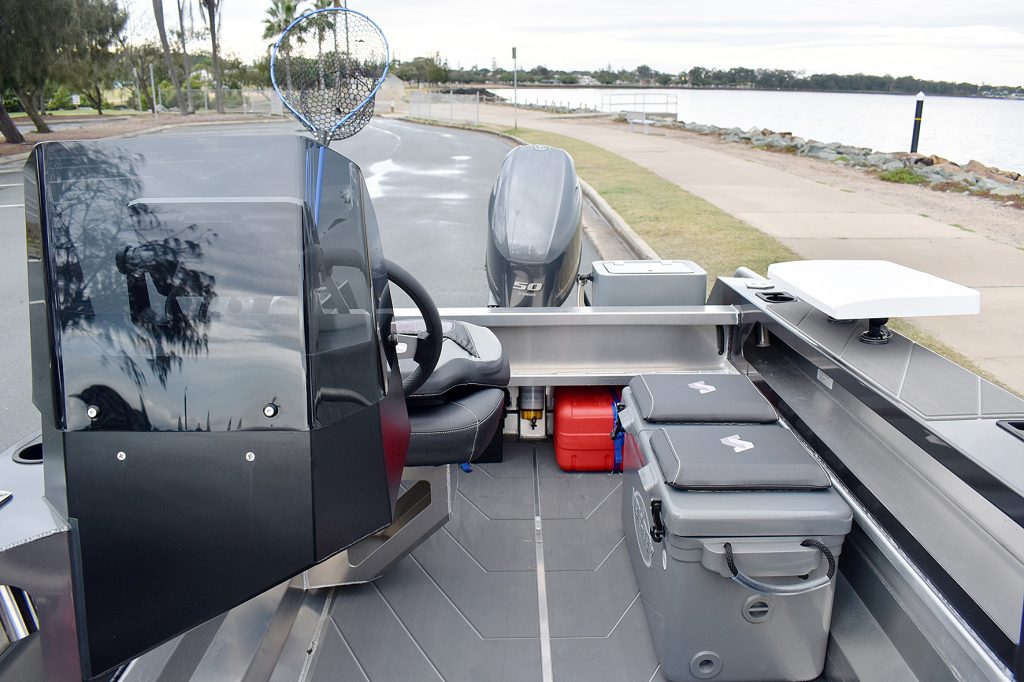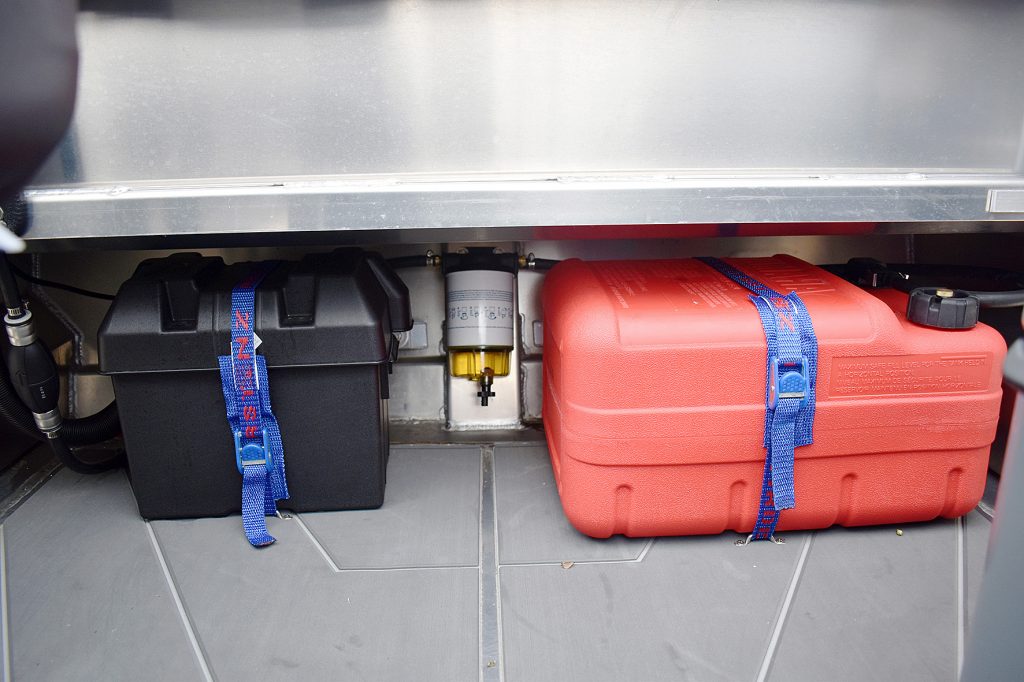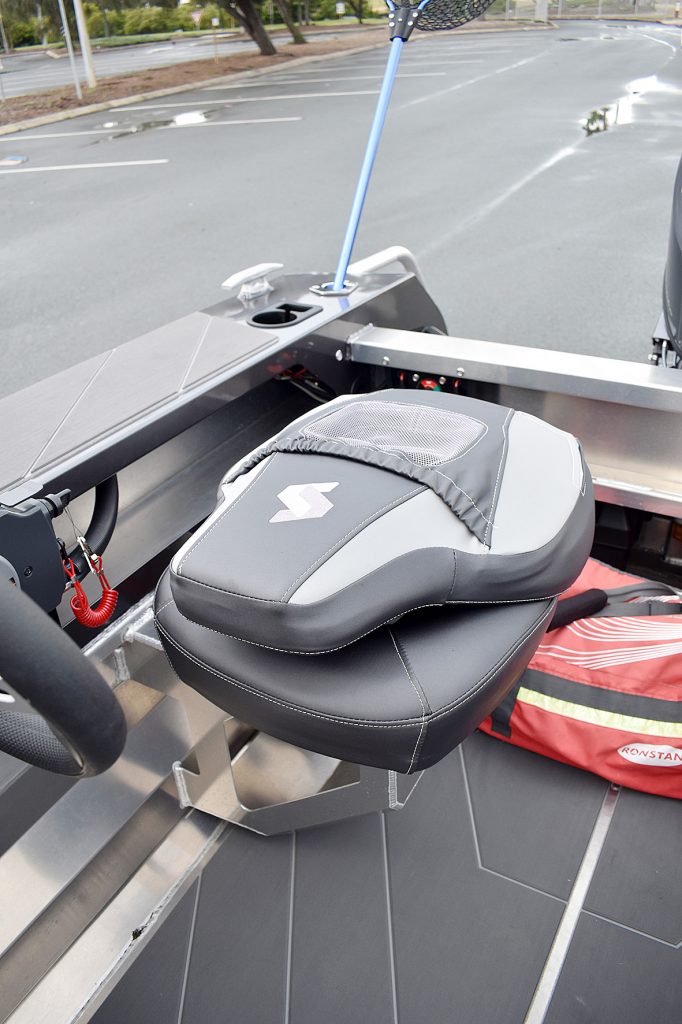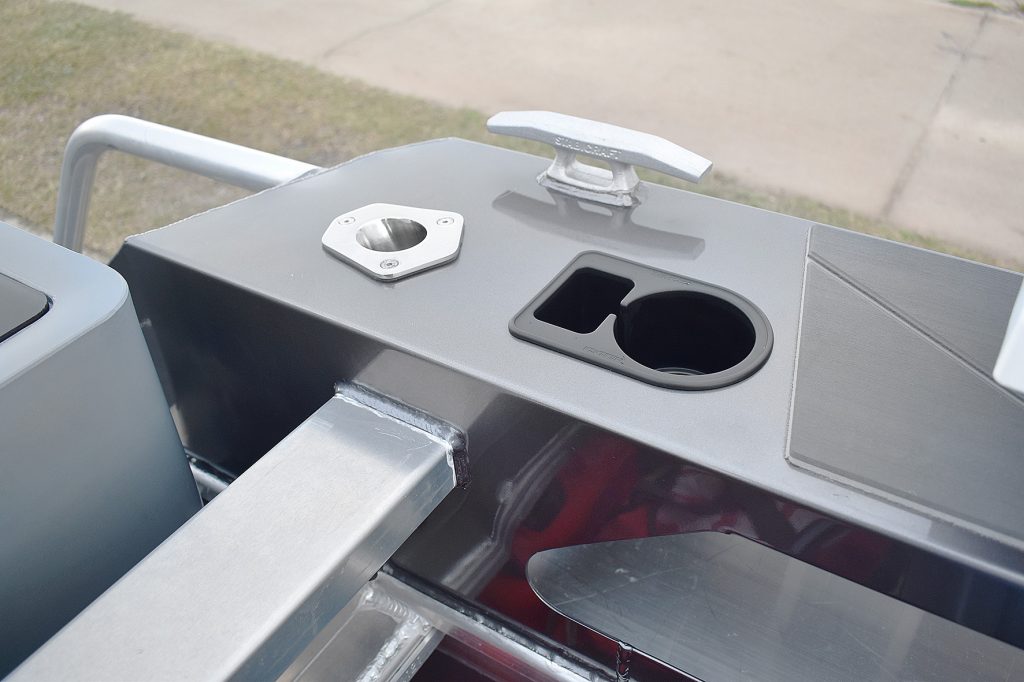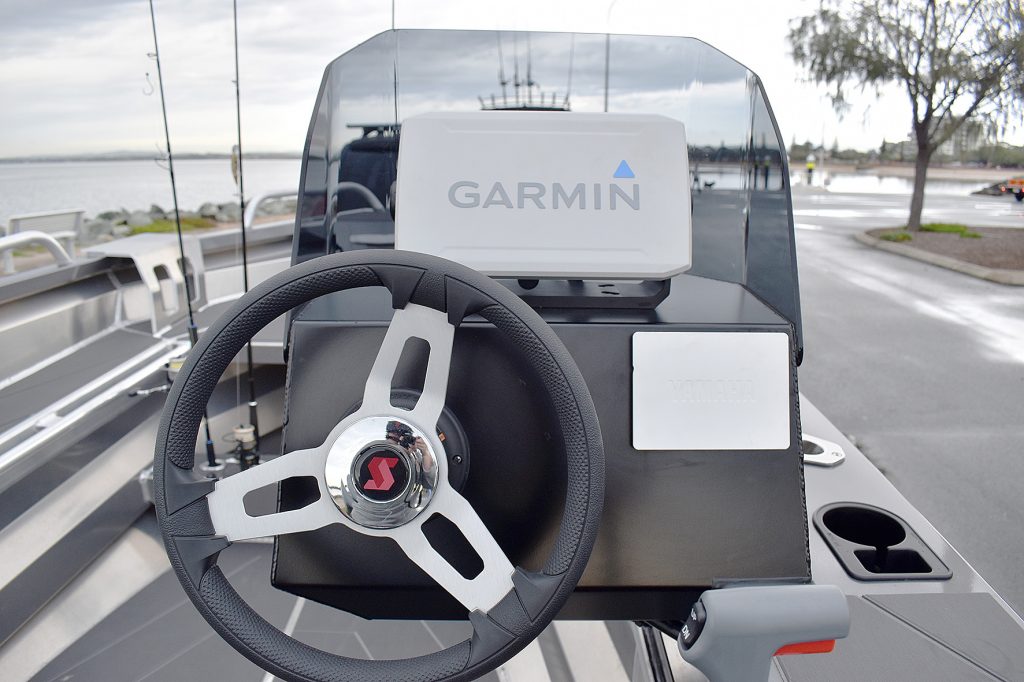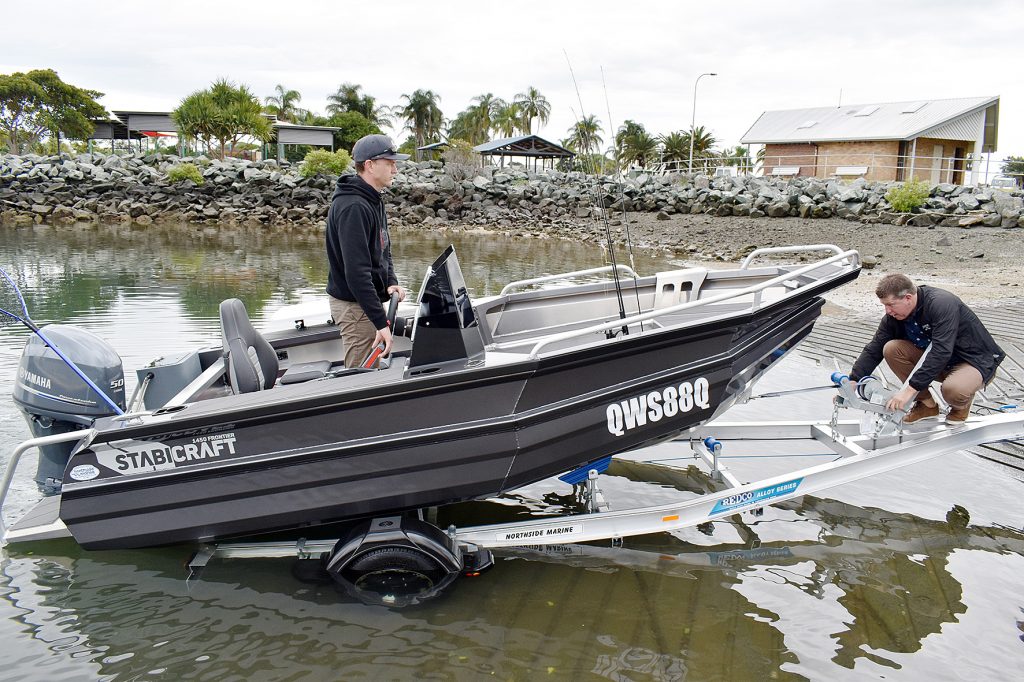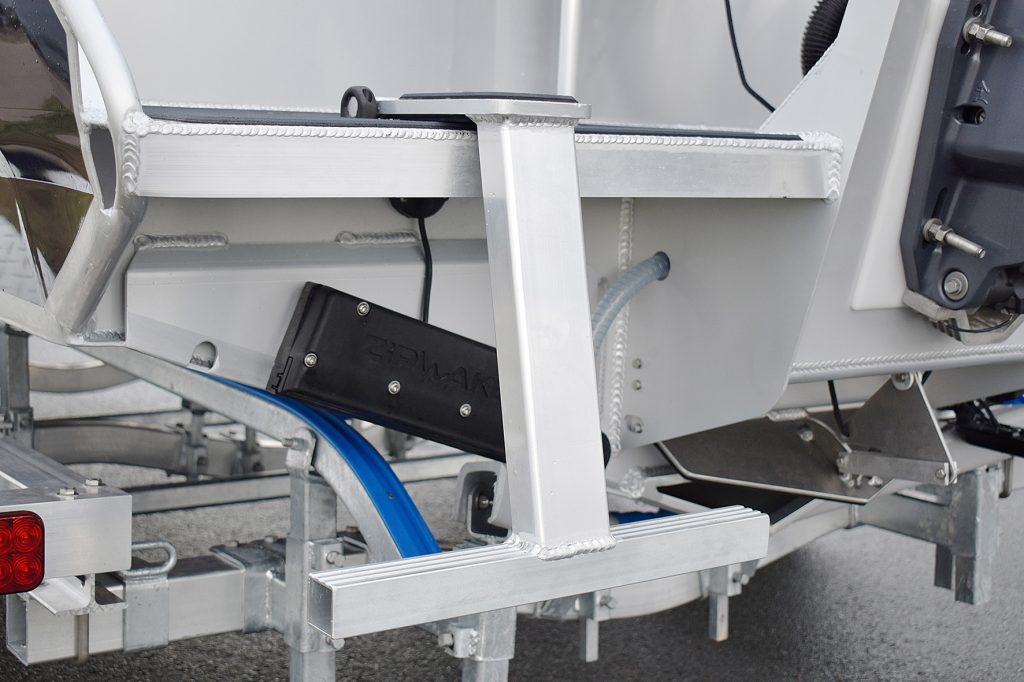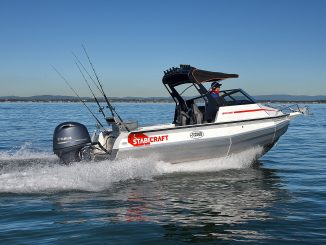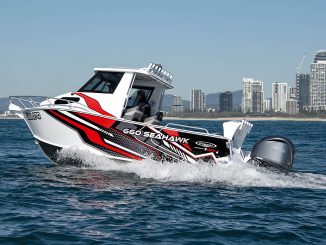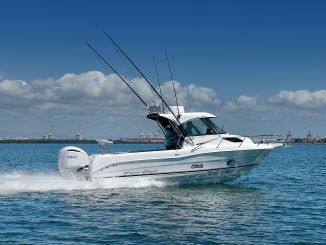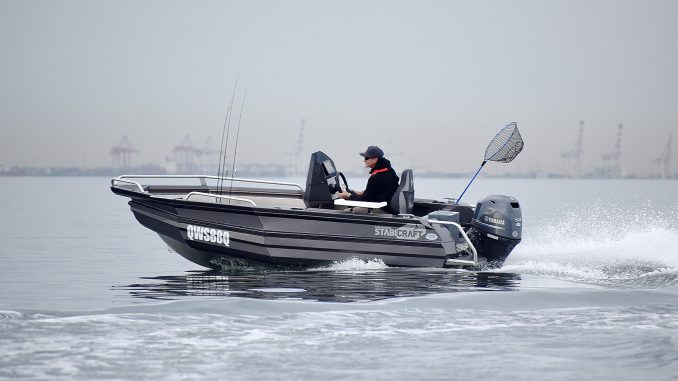
There’s something about Stabicraft boats that people just love. We’ve tested quite a few over the years, right up to the head-turning 2250 Centra Cab that’s broken all sorts of house-records for YouTube views on the test video.
If you’re unaware, we do video tests for all of the boat tests we publish in the magazine, they’re available on our YouTube channel or by scanning the QR code above.
This time, however, it’s from the smaller end of the range. It’s a new model, the 1450, which is 4.42m long and comes in versions from a basic, unpainted tiller-steer right through to the decked out model we’re testing for Brisbane dealer, Northside Marine.
Northside Marine import the hull from New Zealand and then add a locally built trailer, and a Yamaha outboard. In this case, a 50hp model, which is the largest size rated for this hull.
Like all Stabicraft boats, it features their life-ring construction. This is nearly 1000L of air sealed inside the aluminium pontoons. It acts to make the boat positively buoyant if it is ever submerged and the reverse chines help to smooth the ride and deflect spray. It’s always handy to know that if you ever get into trouble, the hull is basically unsinkable.
Northside’s Mark Golden reckons that this hull is incredibly popular.
“It’s because you can get into a hull that you can take offshore on a good day and do it in safety. You can do it in this hull without having to buy a 6m boat,” he said.
Overall, though, this is a hull that will be able to do anything from crabbing up the creeks to chasing pelagics, and is ridiculously economically.
It’s kind of strange to have a boat of this size fitted with remote fuel tanks, but when you consider that you get nearly 100km out of a tank, then you realise that you don’t need a 100L of fuel to get the job done.
Best economy was at 4000rpm, where the Yamaha returned 3.9km/L economy at 31km/h. Wide open throttle yielded inferior economy (2.5km/L) but a top speed of 50km/L at 5,900 rpm. It was running an 11” Yamaha aluminium propeller.
Out on the bay, the boat rode flat. And that’s not just because it was a glass-calm overcast day. It turns flat, there’s no banking into corners like you may have to do in your current boat. And in tight turns, the 15° of transom deadrise helps it hold on.
Internally, my initial impressions was that it’s not spacious – that’s the other side of the life-ring equation. The beam of this hull is 1.89m that decreases to 1.35m internally. The upside, though, is that all of that space is 100% usable. You never feel uncomfortable in this boat. It keeps you inside the chine lines and the gunwales are high enough for this to be easily fished in in a sea.
Move up to the front casting deck and you’ll find it’s a workable size without being huge. The whole deck is covered in a foam flooring material that makes it very pleasant underfoot, and I assume, easy to keep clean.
There’s a very solid electric motor bracket that welded (not just screwed on) and a tray for the accompanying battery up the front as well. Juggling people around inside the boat on the test day and we came to the conclusion that the extra weight up front will actually help the ride.
In the cockpit, there’s a small side console that holds a bracket mounted sounder, helm and a gauge or two. Sitting behind it, you feel that you’re not right behind it, but it matters little as it’s an easy boat to drive.
Passengers will sit on the front deck or deck extentions looking backwards or on the padded ice box that’s movable around the floor.
There’s some decent shelves each side, however, dry storage is limited.
As tested, this kitted-our rig came in at $46,995 with plenty of options boxes ticked, but I suggest you call the team at Northside Marine to get them to quote you on your ideal rig and options. Packages for the 1450 hull start at around $27,500.
Specifications:
Length 4.42m
Beam 1.89m
Dry tow weight 720kg
Max HP 50
Max eng. weight 165kg
Transom Deadrise 15°
Hull/sides 3mm
Pontoon volume 960L
Capacity 6 persons
Performance:
RPM km/h km/L
700 4 4.8
1000 6 3.3
2000 9 2.5
3000 12 1.9
3500 24 3.5
4000 31 3.9
4500 38 3.5
5000 42 3.4
5900 50 2.5

